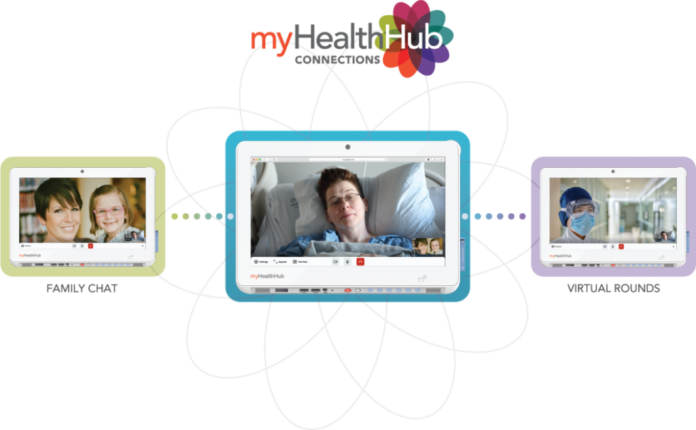How Canadian hospitals can adapt
Before COVID-19 hit in Canada, hospitals were making considerable strides towards implementing their patient experience and engagement strategies. Many were bringing on Chief Experience Officers, investing in innovative technology and assessing how they could better serve their patients.
But, as with so many other things, the coronavirus pandemic threw a wrench into those plans.
Now, almost four months into the COVID era, hospitals are left wondering how they can move forward on patient experience with so many physical isolation measures, PPE requirements and visitor restrictions in place. While “waiting it out” is an option, most have realized there’s little chance that healthcare will return to normal any time soon, if ever. Instead, leaders are facing growing pressures to seek out a new normal and find solutions to adapt. This is especially critical as patients struggle with heightened loneliness, boredom, fear and anxiety.
At HealthHub – as a Canadian patient engagement technology company – we’ve been grappling with these challenges, surveying patients and working hard to rapidly evolve our solutions to help hospitals. In order to adapt their patient experience strategies in the COVID era, we think hospitals should consider the following three approaches:
- Keep patients connected with their loved ones through video chat
Trying to manage patient isolation when visitors aren’t allowed as normal has been an incredible challenge for hospitals to navigate. Although some hospitals have turned to consumer video chat solutions, such as iPads or Zoom, these technologies have introduced new challenges of their own – like privacy and security risks, increased burden for nurses, accessibility restrictions for those with limited mobility, degradation from repeated disinfection and financial loss from lost or stolen items – simply because these technologies weren’t designed for hospital use.
Looking ahead, hospitals can eliminate or mitigate these issues by a video chat solution that’s specifically designed for Canadian hospitals. For video chat to be effective, safe and equitable for all patients, it must be built to meet Canada’s privacy and security laws, offered at the bedside on an accessible and durable platform, be simple to use with no account creation required and support a hospital’s short and long term digital transformation strategy. We’ve built our video chat solution, myHealthHub Connections, to meet those requirements.
- Bring the hospital to the bedside
Patients are not only isolated from loved ones at home, they’re also isolated within the hospital itself. With the need to provide continued quality healthcare, while also reducing the risk of physical contact (RoPC), limiting PPE usage and mitigating provider burnout, there’s an opportunity to bring the hospital to the patient’s bedside using technology. Our myHealthHub platform – which will soon include Virtual Rounds, a new secure video chat capability for healthcare providers – does exactly that. It offers a robust patient engagement platform, delivered on accessible bedside touchscreens, which enables patients to have more control over their experience through access to entertainment, patient education, hospital information, patient surveys, patient requests, video chat and WiFi hotspots. Not only does this improve the patient experience, but it also reduces manual processes, enhances hospital efficiency, limits RoPC and reduces PPE usage.
- Look to flexible, scalable technology
We’re living through a period of uncertainty. No one truly knows how the future will unfold, what patient needs might be tomorrow, or what could happen next. This pandemic has been a painful reminder that we’re not immune and that this could happen again.
For those reasons, it’s important to invest in technology that’s expandable and scalable for the future. Rigid technology that can’t adapt quickly or cost-effectively to the evolving world simply won’t cut it. At HealthHub, we’ve designed our system to be flexible and configurable, and we’ve also recently released a MicroSystem, which is a lite version of our product that can be installed quickly and scaled as needed.
In summary, although the coronavirus pandemic is far from over, we can’t lose sight of the patient experience. Instead, we need to ask ourselves: How can we evolve to meet the new normal?
To learn more about how we’re helping hospitals, visit www.healthhubsolutions.ca/covid-solutions.
*Sponsored content




